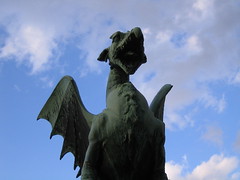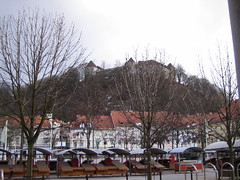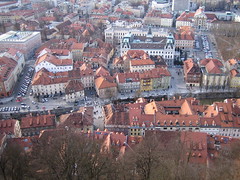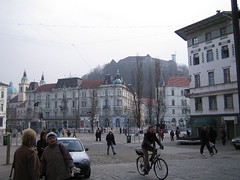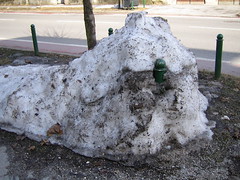Carnival almost over
Four years ago was the last time that I enjoyed carnival in Oruro. In those times I could not imagine spending that period of the year in another place. Admittedly, in carnival I might have consummed one glass of beer too many,or stayed up until unreasonable hours.
You can feel the carnival atmosphere already some days before the parade. This feeling increases when Friday arrives. At the evening you would meet with friends (after the ch'alla at work if you worked) and went for a walk to the Avenida 6 de Agosto, which in those days is called Avenida del Folclore. There and at most other points of the parade, you find the seats installed at both sides of the street. As you walk there, you feel it is going to be a cold night. Fortunately, the big crowds there lessen the effect of the chilly wind. And you didn't go to Avenida del Folclore if you are not going to dance to the tune of the bands and groups that play there, of course. So, cold can be an issue only if you end up at the main square having some drinks with friends while one of them plays the guitar. Usually, I try not to stay too late on Friday, so that I can still wake up on time on Saturday to see the first Diablada.
Playing with water is a big part of carnival. As Eduardo comments on his blog it can get rather aggressive, but from what I have heard and seen, it is more aggressive in Cochabamba than in Oruro. Most of the times pain is not an issue, but rather being completely wet; even your underwear gets soaked. Then there you are, utterly wet, cold and slightly miserable. This only lasts a few minutes because the next carnival group comes dancing, following the tune of a loud carnival band. A combination of willingness to party, love for the music and dances, and beers animates the whole crowd. It is impossible to not join them in the song and the dance. Indeed, very quickly you forget that you were so cold just a few minutes before.
I have been looking at the carnival pictures of some newspapers. I had the hope of recognizing some friends or relatives dancing in the groups. I yet have to find a more extensive gallery from the carnival. I can see that people were mostly having fun instead of taking pictures.
I have a lot of trouble believing La Patria's statement that one million persons watched the Oruro carnival. I find more credible the report from La Razon mentioning half a million spectators, although that is a very high number too!
I thought that I would get terribly nostalgic the next time that I would spend carnival somewhere else than in Oruro. The fact is that I am not. And it is not because I do not enjoy being there. In fact it is one of the most musical and exciting parties around. I have always have had fun there, I bet that my friends and relatives are still telling each other the things that they did. I am not nostalgic about not being there, maybe because I accept that for the time being it is not easy to go there.
The carnival in Oruro is not the only one worth participating in, even if people from Oruro often feel like that :). Yesterday, I was at the Slovene town of Ptuj. I laughed so much at the creativity of the costumes in the parade. You have the traditional costumes such as the Kurent and many others. I would like to show you pictures but I stupidly forgot the battery at home. Showing pictures of the parade would not do justice to the carnival. Practically every group in the parade made a sort of performance or show. This show combined with the costumes had a highly hilarious effect. As I said, I am impressed by the creativity of the people participating there, all the more so because most of them made the decoration and costumes themselves.
Update: One sentence should read: The carnival in Oruro is not the only one worth participating in, even if people from Oruro often feel it is. The wrong sentence above caused a confusion in the Bolivian blogs roundup. Clarifying: I am Orureño and carnavalero, but I don't feel nostalgic due to the lack of Oruro's carnival; what is more, I enjoy seeing other carnivals too (well, it depends, I didn't like the Den Bosch one).

